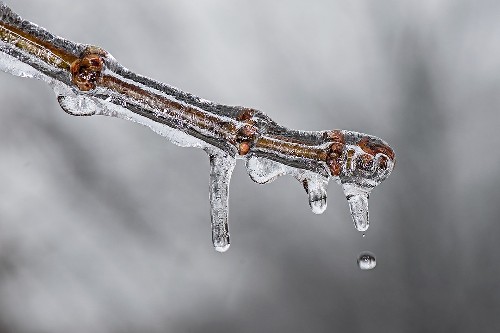Declining snowfall is changing the seasonal patterns of streamflow throughout the Northern hemisphere boosting chances of water shortages in the summer, scientists have found.
Snowy areas in in the Rocky Mountains of North America, the European Alps and northern Europe are thawing prematurely as the Earth warms. Additionally, seasonal flows in less snowy areas are delayed as warm-season rain arrives later in the year becoming a more dominant source of river flow. Precipitation over winter is reduced.
The findings, published in Nature, suggest a higher risk of summer droughts, which could adversely impact water and food security, ecosystem health, and hydropower generation.
Author Dr Ross Woods from the University of Bristol’s Faculty of Engineering explained: “Streamflow seasonality affects the temporal distribution of water resources and has wide-ranging implications for ecosystem functioning, food security, and natural hazard management.
“In some places where snowfall is a major component of the water cycle, researchers had previously shown that, with climate warming, less of the precipitation falls as snow, snowpacks were changing, and the associated pulse of river flow generated by that melt water was also changing.
“However, there were conflicting reports about these changes, with some places showing earlier peaks, some not changing, and some were later in the year.”
The team analysed climate and river flow data for more than 3000 river basins across the northern hemisphere, from 1950-2020. For each year of data, they calculated the fraction of precipitation falling as snow, the seasonal variation and the seasonal timing of precipitation and river flow. They then compared these seasonality indicators between the two ten-year periods with the highest and lowest snowfall fraction.
Dr Woods continued: “The increased interannual variability of streamflow seasonality implies greater uncertainty in seasonal streamflow patterns, posing challenges for water resource planning and management.
“Water managers need different strategies to adapt to this, depending on their location. Future planning for water infrastructure will need to take account of these changes in seasonal river flow.”
As climate warms, seasonal streamflow peaks tend to decrease, so there is more uniform streamflow distribution over a year. The reduction in seasonal variation is mainly driven by a decrease in warm-season streamflow, while cold-season streamflow remains relatively unchanged.
“The timing and seasonal variation of streamflow showed a larger interannual variability during declining snowfall which means planning for more variability between years into the future as climate continues to warm is essential,” concluded Dr Woods.
The team now plan to further investigate reasons for consistent reductions in cold season precipitation in warmer winters.







